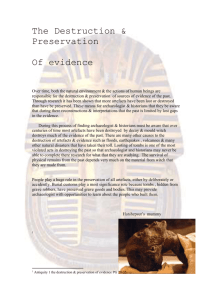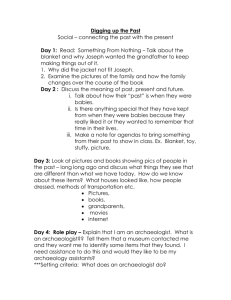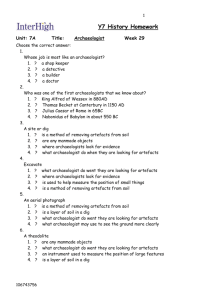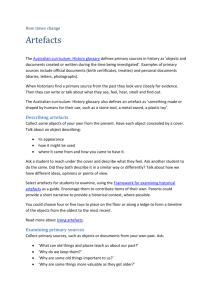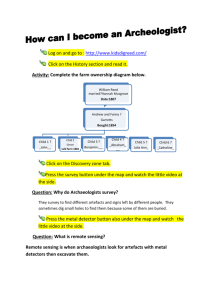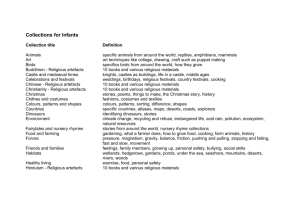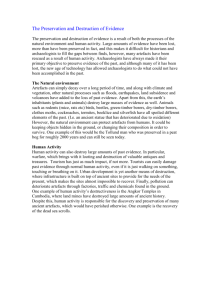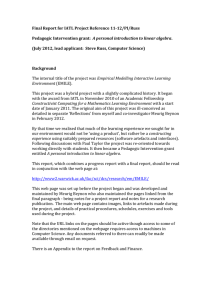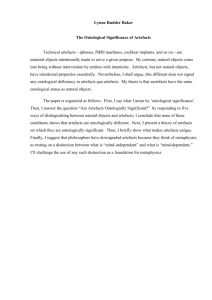File
advertisement
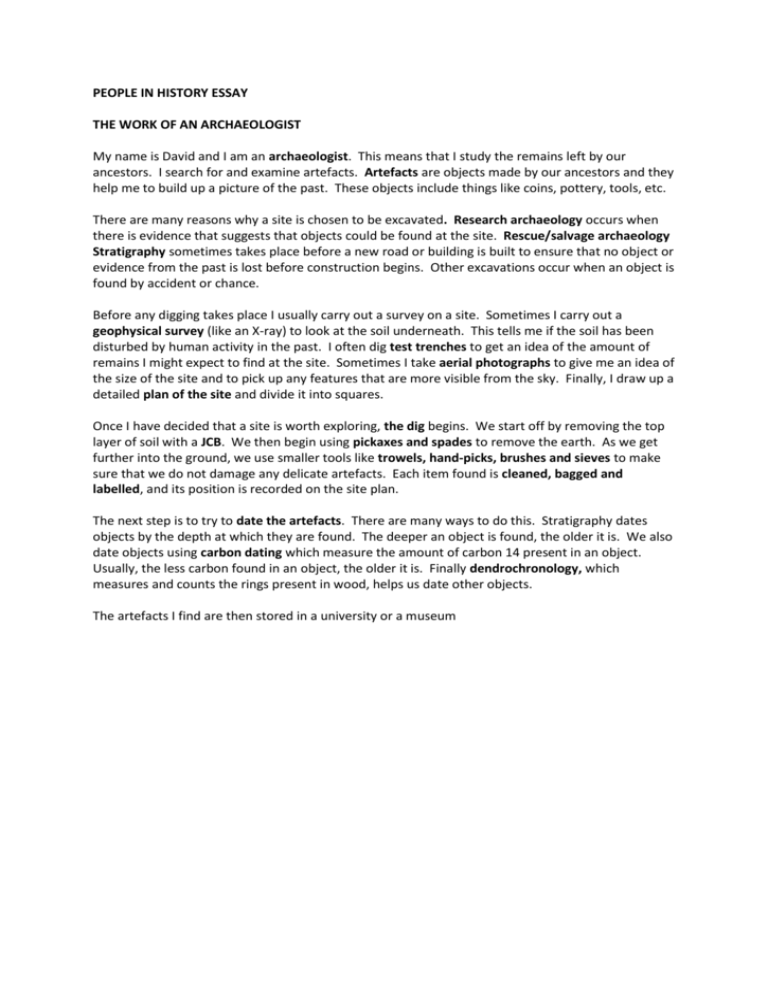
PEOPLE IN HISTORY ESSAY THE WORK OF AN ARCHAEOLOGIST My name is David and I am an archaeologist. This means that I study the remains left by our ancestors. I search for and examine artefacts. Artefacts are objects made by our ancestors and they help me to build up a picture of the past. These objects include things like coins, pottery, tools, etc. There are many reasons why a site is chosen to be excavated. Research archaeology occurs when there is evidence that suggests that objects could be found at the site. Rescue/salvage archaeology Stratigraphy sometimes takes place before a new road or building is built to ensure that no object or evidence from the past is lost before construction begins. Other excavations occur when an object is found by accident or chance. Before any digging takes place I usually carry out a survey on a site. Sometimes I carry out a geophysical survey (like an X-ray) to look at the soil underneath. This tells me if the soil has been disturbed by human activity in the past. I often dig test trenches to get an idea of the amount of remains I might expect to find at the site. Sometimes I take aerial photographs to give me an idea of the size of the site and to pick up any features that are more visible from the sky. Finally, I draw up a detailed plan of the site and divide it into squares. Once I have decided that a site is worth exploring, the dig begins. We start off by removing the top layer of soil with a JCB. We then begin using pickaxes and spades to remove the earth. As we get further into the ground, we use smaller tools like trowels, hand-picks, brushes and sieves to make sure that we do not damage any delicate artefacts. Each item found is cleaned, bagged and labelled, and its position is recorded on the site plan. The next step is to try to date the artefacts. There are many ways to do this. Stratigraphy dates objects by the depth at which they are found. The deeper an object is found, the older it is. We also date objects using carbon dating which measure the amount of carbon 14 present in an object. Usually, the less carbon found in an object, the older it is. Finally dendrochronology, which measures and counts the rings present in wood, helps us date other objects. The artefacts I find are then stored in a university or a museum
